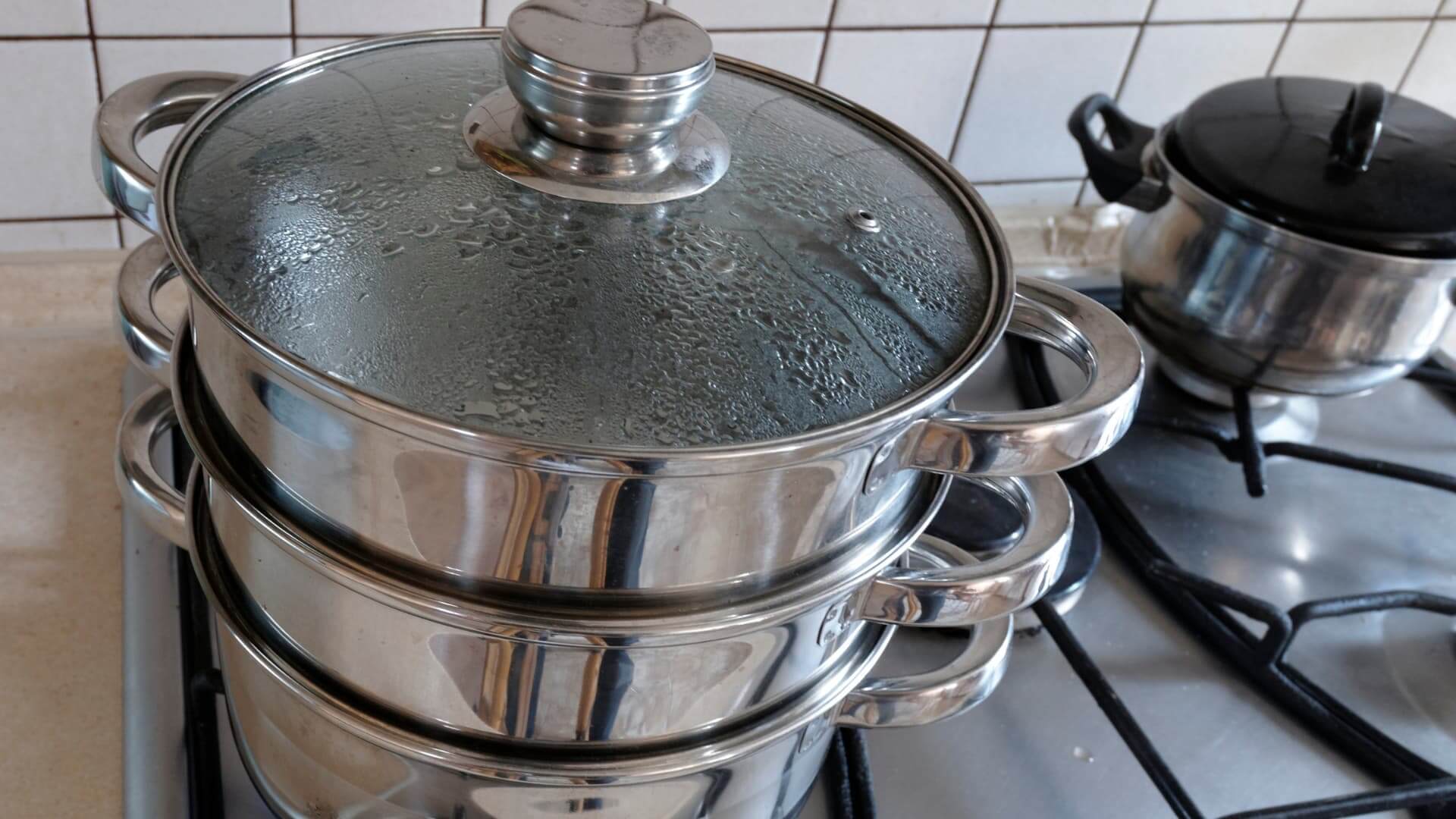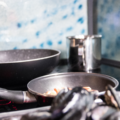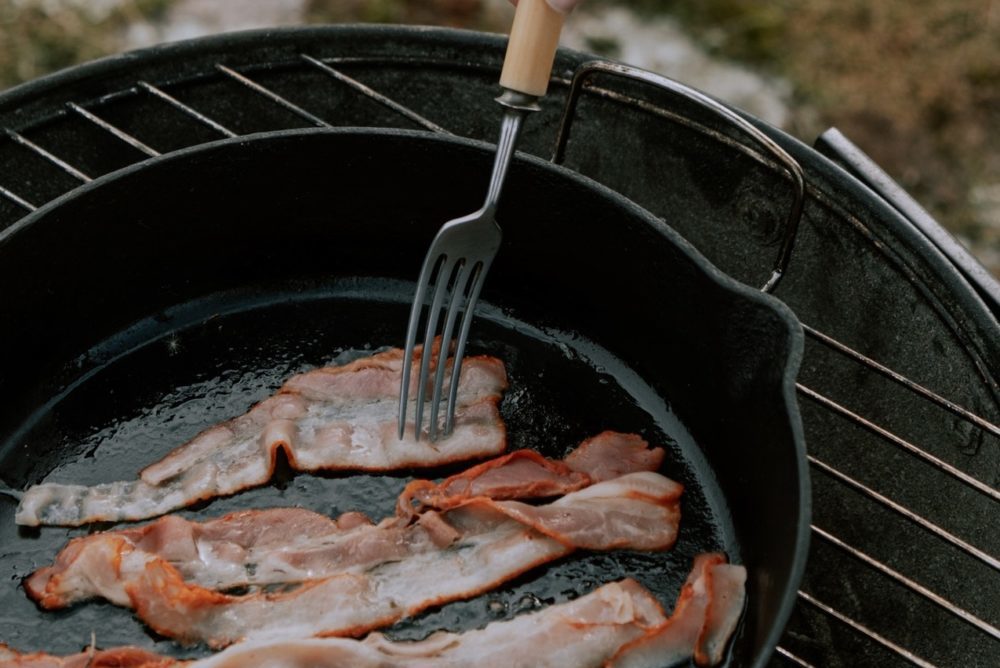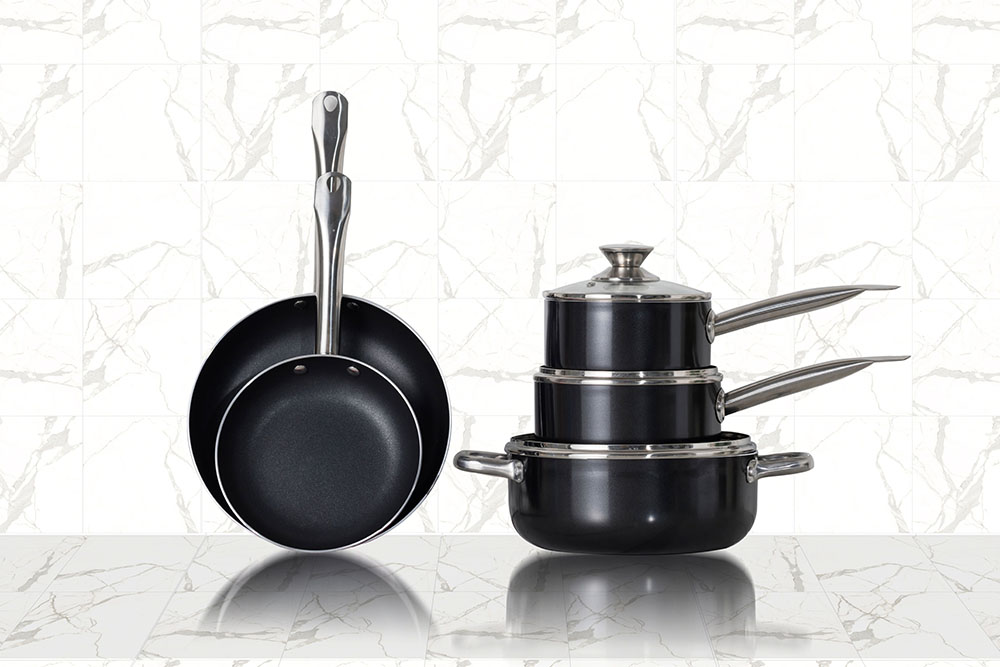Like everyone else, you may be looking for the healthiest cooking option for you and your family. You want to cook delicious food while retaining as many nutrients as possible.
Here is when the concept of waterless cooking may pique your curiosity. It makes you wonder: what is waterless cookware and how do you cook waterless? And is it a healthier cooking option?
What Is Waterless Cooking?
Waterless cooking is a cooking method using minimal temperatures, water, and no added fat. It follows the concept of cooking with smaller vessels filled with food, which generates more steam than cooking in large, half-filled pots.
The importance lies in steaming and not browning food. It is not only healthier but also a faster cooking option.

What Is Waterless Cookware?
Waterless cookware comprises multiple metal layers. It has a high-grade stainless steel cooking surface that prevents any leaching of metals into foods.
It’s aluminum or copper-layered heating surface ensures even heat distribution while the iron core retains heat longer, compared to other materials.
The cookware usually comes with tight, steam-release valve lids to seal moisture in. The lids form a seal to cook food as the heat increases and creates vapor. They prevent the escape of moisture or steam that is released from the food while cooking.
The generated steam in turn pressurizes the pan to cook food at low temperatures and even cooks some foods faster.
Waterless cookware sometimes has a built-in steam control valve that regulates the cookware steam amount. It detects any steam rushing out of the valve and emits a whistling sound. The sound lets you know it’s time to reduce the temperature or turn the stove off.
Benefits Of Waterless Cookware
Here are some benefits and reasons to invest in waterless cookware:
Cooks Healthy And Tasty Food
Did you know that you lose up to 50% of minerals while boiling food? Besides, you also lose lots of vitamins and minerals when you use water to boil your food.
Waterless cookware helps avoid this loss by sealing all the food nutrients in the cookware. The food will also be healthier and tastier. It retains more than 90% of the food’s nutrients, flavors, and texture!
Energy Efficient
You need lots of energy and high temperatures to bake food in the oven or fry on stoves. The high heat also reduces the food’s nutritional value. Waterless cookware consumes less gas or electricity to cook, and retains most of its nutrients.
No Need For Additives And Preservatives
As waterless cookware retains food flavor, aroma, and color, there’s no need to add any additives or preservatives while cooking.
More Appealing Food
The lack of oil, butter, and water used while cooking makes food look more appealing and presentable. This will help enjoy your meal even more.
Aesthetic Looking Cookware
Waterless cookware is aesthetically pretty and blends well with the rest of your kitchen utensils. All it needs is a gentle rubbing or wiping to give the mirrored finish its original beautiful condition.
Easy To Clean
Waterless cookware is dishwasher friendly and easy to clean. You may, however, have to spend a little more time cleaning the lids and especially cleaning the steam release valves.
Stackable Pieces
Here is the highlight of waterless cookware, the fact that it’s stackable! You can stack multiple dishes on one burner to save energy and cooking time because you only need one burner for cooking.
Less Time Spent On Cooking
Cooking is so much faster and hassle-free with waterless cookware. As it comes in stackable pieces, you can save more time by cooking on a single stove or burner.
Safe
Thanks to its materials, waterless cookware is safe for cooking. Its surgical stainless steel body ensures the aluminum core doesn’t come in contact with your food. In the process, it prevents any leaching of metals into the food.
Corrosion-Resistant
The waterless cookware heating surface is corrosion-resistant stainless steel. So there’s no risk of finding any corroded pot particles in your food.
Durable
Though a bit on the expensive side, it’s worth the money. Waterless cookware is so durable that most cookware comes with a lifetime guarantee.
Disadvantages Of Waterless Cookware
Everything has its share of disadvantages, including waterless cookware.
Expensive
As mentioned earlier, waterless cookware is expensive compared to other cookware. However, the expensive materials that go into its manufacture to produce cookware that lasts a lifetime, make the expense well worth it.
Heavy
Yes, waterless cookware is indeed heavier than other cookware types. It’s because of the many metals used in its construction.
Not Being Able To Remove The Lid While Cooking
You can’t remove the lid to look at or taste food while cooking. Removing the lid only allows heat and moisture to escape, and slow down the cooking.
However, this is a temporary problem. Once you get used to the cookware, you won’t need to remove the lid to decide if the food is cooked and ready or not.
Is Waterless Cooking Healthier Than Other Cooking Methods?
To us, the answer is yes.
Yes because it’s true that cooking at low temperatures with minimal moisture leads to fewer lost nutrients. Besides, browning from high heat creates unhealthy compounds that are best avoided.
However, while fat-free cooking does seem to be a good idea, it isn’t always true. Your body needs SOME fat for survival. Besides, there are some fat-soluble nutrients your body cannot absorb without the presence of fats. But once again, you need to use the right fats because saturated or low fats aren’t always good.
Therefore, yes, waterless cooking is healthier than other cooking methods.
But remember: if you don’t eat fats in other ways, it’s better to add at least some healthy fats to your food. You could use olive oil to garnish or toss your waterless cooked food. This way, you reap the maximum benefits of waterless cooking.
Final Thoughts On Waterless Cookware
Waterless cookware offers so many benefits; it’s no wonder so many people are investing in it. It is energy-efficient, saves cooking time, and retains the flavor and nutrients of the food. Once you get used to cooking waterless and eating waterless cooked food, you will stop using your traditional cooking methods. We are sure of it!






